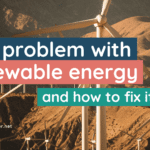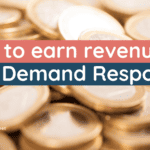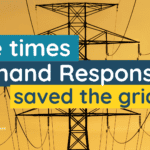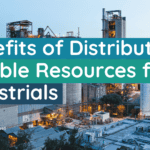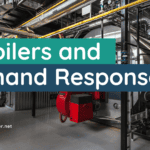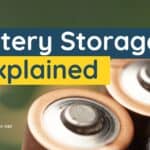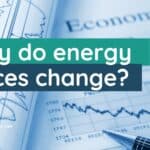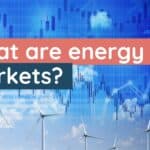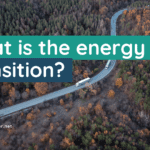People often refer to ‘the grid’ when talking about our energy. But not everyone knows exactly what it is, or how it works, or why it even fails. But understanding these things is critical to knowing how our energy systems need to evolve for the climate crisis and beyond. From supply shortages to smart grids, here’s all you need to know about power grids and outages.
What is the Power Grid?
A power grid is a network for electricity generation, to transfer energy from producers to consumers. It’s sometimes called an energy grid, national grid or power grid depending on who you talk to. Regardless of what you call it, there are two components that form it.
Infrastructure
Infrastructure is the backbone of the power grid. It’s the network of power lines, pylons, power plants, gas lines and interconnectors that allow electricity to be transferred from energy producers to consumers.
Energy Utilities and Balancing Players
Energy utilities and balancing players are the groups responsible for producing and distributing electricity. These might include energy utility companies, energy suppliers, transmission system operators (TSOs), and even independent aggregators. The role of these players can vary greatly. But they ensure that the power gets distributed, and stays on whenever it’s needed.
The biggest grid in the world is The Synchronous Grid of Continental Europe (or the continental Synchronous Area). It’s the largest synchronous electrical grid (by connected power) in the world. Spanning 35 different countries, interconnections between these different regions allow them to share and trade energy. This helps to create a more robust and versatile energy system.
How do Power Grids Work?
There are 3 main steps to transferring energy from producers to consumers.
Generation
Before energy can be distributed across the grid, it first has to be generated. Power plants are the main source of power generation. Generation can occur through traditional methods like burning fossil fuels (coal and gas). Or through renewable power plants (wind and solar). Power plants use these energy sources to create electricity that can then be distributed to energy consumers.
Distribution
This electricity then has to be transferred from the power plant to those who need it. Transmission lines are used to distribute that electricity across the grid to energy consumers. Electricity has to be moved at a high voltage to ensure minimal energy is lost as it moves from power plants to energy consumers.
Consumption
Every time someone turns on the lights, charges their electric vehicle, or uses any other electric appliance, they are using electricity from the grid. The amount of electricity used by consumers is called the “demand load”. It’s important that demand load and supply remain in balance to keep the grid maintain a frequency of 50Hz to prevent blackouts. But this demand load is increasing over time as the electrification of our world continues.
What Causes Power Grid Failure and Outages?
Weather Events
Extreme weather events due to climate change are one of the main reason people experience power outages. This is usually a distribution failure; an outage that affects a relatively small area. For example, when a tree branch blows onto a power line during a thunderstorm, it might cause a blackout in your local area.
On a larger scale, serious weather events can damage infrastructure and have more lasting impacts. Think of events like excessive heat waves, hurricanes, flooding or winter storms. This occurred in 2021 when Texas experienced a massive winter storm that left millions of people without power.
Planned Outages
Planned outages are intentional outages of the power grid. It’s not uncommon for certain parts of the grid to be turned off in order to perform maintenance on infrastructure. But sometimes grid operators will turn off the grid due to safety risks. During Australia’s bushfire season, cutting off power to a high fire risk area reduces the chances of these fires starting. Especially if a tree branch or flying debris touches the power lines.
Supply Shortages or Excessive Demand
One final reason why you experience a power outage is because of a lack of supply. For example, on hot summer days when everyone’s using their AC systems, there might not be enough electricity being generated to meet this high demand load. This can cause rolling blackouts. Rolling blackouts are a response from grid operators where they turn off power to a select group of consumers. This is to stop the grid from experiencing a full blackout and making the issue worse.
How do we prevent the power grid from going down?
The way that we prevent power grid outages depends on what causes them. Sometimes there’s little we can do about unexpected events. But we can create a more resilient power grid to tackle these problems.
Interconnections are a great way to prevent the power grid from going down. In fact, the EU has set an interconnection target of at least 15% by 2030. This means that at least 15% of electricity produced in one area can be transported across its borders to other countries. So in situations where an outage occurs, countries can rely on each other for energy. Not only does this prevent blackouts, but it reduces the need for new power plants, and makes the management of renewable energy sources easier.
This rise in renewables will also create new challenges for our power grids. In 2020 renewables accounted for 39% of the EU’s electricity. But since renewables don’t always produce energy consistently, there’s a risk of supply shortages and high demand loads. As renewables make up more of our energy generation, there’s a growing need to manage their intermittent nature. That’s why we need to develop smarter grids.
Smart grids are power grids that use technology to respond and adapt to change. Using a constant stream of data, they can instantly adjust supply to meet real-time demand. This means that if there is an imbalance between supply and demand, they can correct it. For smart grids, demand is something that can be managed. Through methods like demand response, energy used by consumers can be changed to help prevent outages.
_________
Sympower is dedicated to creating a fully renewable energy system. We are the energy experts with years of experience in demand response and flexibility optimisation. Our goal is to turn the potential of your energy assets into extra revenue for you. We provide the technical expertise, all while you stay in control.


